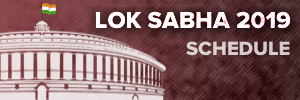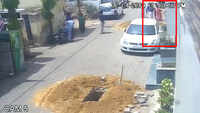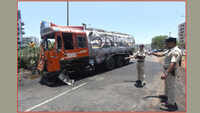
Gurgaon: The Election Commission’s (EC) efforts to increase voter participation, especially among female voters, haven’t reaped the expected results.
In spite of initiatives like all-women polling booths and various voter awareness schemes, the overall turnout of women voters in the city dropped by three percentage points compared to 2014 Lok Sabha elections.
A comparative analysis of data revealed by the EC indicates an increased women electors in this election. However, the quantum of rise in registered women voters didn’t translate into better women voter turnout. With a total rise of 17% (from 8,55,633 to 10,04,832 ) between 2014 and 2019, the number of women electors saw an encouraging upward trend. However, when we look at actual turnout of women voters, only 66.22% of the 10,04,832 registered women voters turned out to vote, compared to 69.36% in 2014.
The Gurgaon parliamentary constituency is divided into nine assembly constituencies — four in Gurgaon (Sohna, Pataudi, Badshapur and Gurgaon), three in Mewat (Nuh, Firozepur Jhirka and Punhana) and two in Rewari (Rewari and Bawal). While Bawal, Rewari and Pataudi recorded better turnout of women voters, the six other assembly segments saw a downward trend. With 59.42%, Gurgaon recorded the lowest turnout. Interestingly, even in 2014, Gurgaon saw the least participation of women voters (64.89%). Meanwhile, Punhana saw the sharpest decline in female voters’ turnout. In 2014, around 72% of the 68,298 registered women voters cast their votes, which fell by nine percentage points this year.
Speaking to TOI, Mahindra Thakur, a political analyst and associate professor at Centre for Political Studies in Jawaharlal Nehru University (JNU), pointed out, “Look at Bihar. Nitish Kumar has created a strong vote bank among women. From reservation to increased enrolment of the girl child in schools, to ban on liquor to please rural women, politics in Bihar has made women’s issues a part of the political narrative. However, in Haryana, men still rule the roost. This is reflected on poor women’s participation in the election.” Tara Krishnaswamy, co-founder of Politcal Shakti, believes signs are encouraging, as the number of women candidates and voters have increased in 2019. “More women are coming out to vote and that’s important. The percentages and differences must be read with care. The baseline data is still very shaky, as we have found that on many occasions, EC’s data was inaccurate. A city like Gurgaon sees a lot of migration, which doesn’t get reflected in EC data,” she argued.
In spite of initiatives like all-women polling booths and various voter awareness schemes, the overall turnout of women voters in the city dropped by three percentage points compared to 2014 Lok Sabha elections.
A comparative analysis of data revealed by the EC indicates an increased women electors in this election. However, the quantum of rise in registered women voters didn’t translate into better women voter turnout. With a total rise of 17% (from 8,55,633 to 10,04,832 ) between 2014 and 2019, the number of women electors saw an encouraging upward trend. However, when we look at actual turnout of women voters, only 66.22% of the 10,04,832 registered women voters turned out to vote, compared to 69.36% in 2014.
The Gurgaon parliamentary constituency is divided into nine assembly constituencies — four in Gurgaon (Sohna, Pataudi, Badshapur and Gurgaon), three in Mewat (Nuh, Firozepur Jhirka and Punhana) and two in Rewari (Rewari and Bawal). While Bawal, Rewari and Pataudi recorded better turnout of women voters, the six other assembly segments saw a downward trend. With 59.42%, Gurgaon recorded the lowest turnout. Interestingly, even in 2014, Gurgaon saw the least participation of women voters (64.89%). Meanwhile, Punhana saw the sharpest decline in female voters’ turnout. In 2014, around 72% of the 68,298 registered women voters cast their votes, which fell by nine percentage points this year.
Speaking to TOI, Mahindra Thakur, a political analyst and associate professor at Centre for Political Studies in Jawaharlal Nehru University (JNU), pointed out, “Look at Bihar. Nitish Kumar has created a strong vote bank among women. From reservation to increased enrolment of the girl child in schools, to ban on liquor to please rural women, politics in Bihar has made women’s issues a part of the political narrative. However, in Haryana, men still rule the roost. This is reflected on poor women’s participation in the election.” Tara Krishnaswamy, co-founder of Politcal Shakti, believes signs are encouraging, as the number of women candidates and voters have increased in 2019. “More women are coming out to vote and that’s important. The percentages and differences must be read with care. The baseline data is still very shaky, as we have found that on many occasions, EC’s data was inaccurate. A city like Gurgaon sees a lot of migration, which doesn’t get reflected in EC data,” she argued.
Make sense of the 2019 Lok Sabha elections and results on May 23 with TOI. Follow us to track latest news, live updates, news analysis and cutting-edge data analytics. Track live election results, the big trends and fastest updates on counting day with India's largest news network.
#ElectionsWithTimes
Elections 2019

Trending Topics
LATEST VIDEOS
City
 Caught on cam: BSP councillor’s husband threatens woman by brandishing gun in Meerut
Caught on cam: BSP councillor’s husband threatens woman by brandishing gun in Meerut  Primary school teacher at Agra allegedly failed to say how many alphabets in Hindi and English
Primary school teacher at Agra allegedly failed to say how many alphabets in Hindi and English  Mumbai: Woman claims constable stripped in front of her
Mumbai: Woman claims constable stripped in front of her  Tanker carrying kerosene overturns near Warje flyover bridge, creates chaos on roads
Tanker carrying kerosene overturns near Warje flyover bridge, creates chaos on roads
More from TOI
Navbharat Times
Featured Today in Travel
Quick Links
Lok Sabha Election Schedule 2019Lok Sabha Election NewsDelhi Capitals teamMI team 2019Rajasthan Royals 2019RCB team 2019Maharashtra Lok Sabha ConstituenciesBJP Candidate ListBJP List 2019 TamilnaduShiv Sena List 2019AP BJP List 2019Mamata BanerjeeBJP List 2019 MaharashtraPriyanka GandhiBJP List 2019 KarnatakaAMMK Candidate List 2019BJP List 2019 WBLok Sabha Elections in Tamil NaduBSP List 2019 UPNews in TamilLok Sabha Poll 2019Satta Matka 2018PM ModiMahagathbandhanNagpur BJP Candidate ListChandrababu NaiduTamil Nadu ElectionsUrmila MatondkarNews in TeluguMadras High CourtTejashwi YadavArvind KejriwalTejasvi SuryaPawan KalyanArvind KejriwalYogi AdityanathJaya PradaSatta King 2019Srinagar encounter
Get the app




